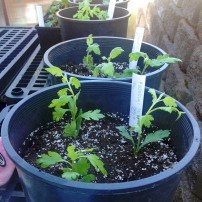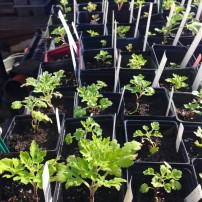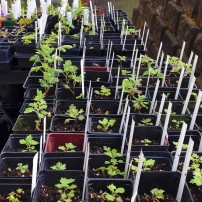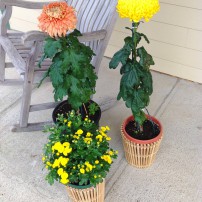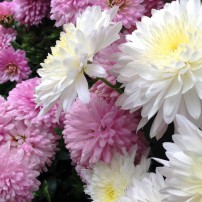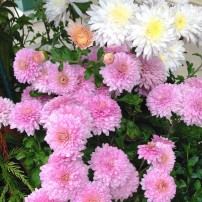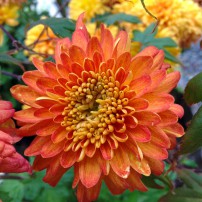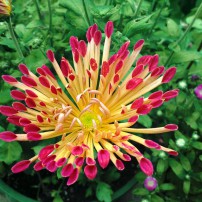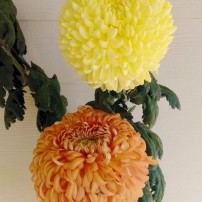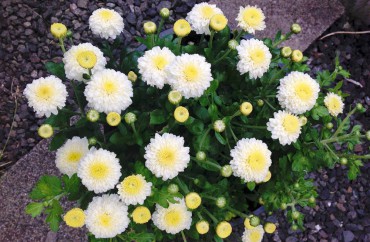
Fall is the time of year when chrysanthemums appear in nurseries and garden centers. Gardeners may see them through the winter months too.
Chrysanthemums originated in China and have been the national flower of Japan since 910 A.D. but have only been cultivated relatively recently in Western countries.
Known as potted mums, they’re more commonly used for fall displays than in the garden. Some people treat them as annuals for fall color and purely for enjoyment. Gardeners who like choices greater than those provided by local nurseries purchase starts in spring, allowing the plants more time to become established to the local garden conditions.
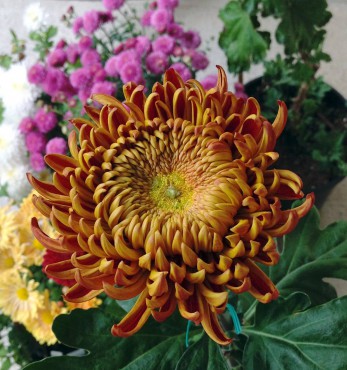
Garden Mums and Florist Mums
You may be familiar with two broad categories of chrysanthemums: hardy garden mums and less hardy florist, exhibition or football mums. The less hardy types can be grown in the home garden using specific techniques of disbudding and staking, and like all mums, they make good cut flowers.
Garden mums are most often grown in home gardens and are grouped by the shape of the flower. Officially, the U.S. National Chrysanthemum Society recognizes 13 classifications for exhibition. Common garden classes are decorative, cushion, daisy, pompom, button, anemone, spoon, spider and quill.
Mum Culture
Mums are herbatious perennials that thrive with regular fertilizer, in full-sun conditions with well-drained soil.
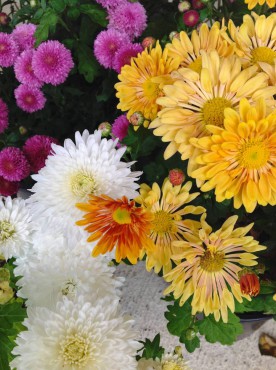 When purchased as starts in March or April, mums should be put into 4-inch pots with a loose potting mix for a few months. During this time, a weak root-growth fertilizer, such as Alaska 0-10-10 mixed in water, may be used on a weekly basis. This will encourage development of a substantial root system, which is essential to support the rapid vegetative growth in July and August.
When purchased as starts in March or April, mums should be put into 4-inch pots with a loose potting mix for a few months. During this time, a weak root-growth fertilizer, such as Alaska 0-10-10 mixed in water, may be used on a weekly basis. This will encourage development of a substantial root system, which is essential to support the rapid vegetative growth in July and August.
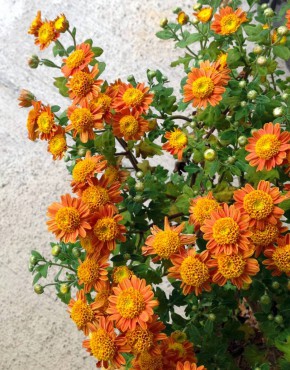 Replant them in their final container or in the ground by May 31. Now the fertilizer should change to one that encourages bloom, such as the liquid Miracle Grow.
Replant them in their final container or in the ground by May 31. Now the fertilizer should change to one that encourages bloom, such as the liquid Miracle Grow.
The chrysanthemum is a shallow-rooted plant that does not develop a taproot. For this reason, when mums are planted out into the garden, they should be planted no deeper than they were in the previous growing medium.
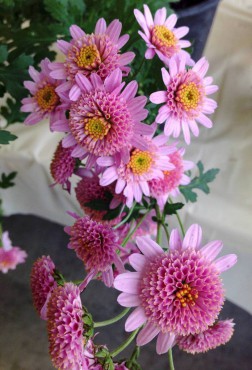 After May 31 and until July 4 during the chrysanthemum growing season, it is beneficial to pinch off about a half-inch or so from the growing tips. Pinching triggers hormone-stimulated growth of additional axillary buds, thus yielding more flowers in the fall.
After May 31 and until July 4 during the chrysanthemum growing season, it is beneficial to pinch off about a half-inch or so from the growing tips. Pinching triggers hormone-stimulated growth of additional axillary buds, thus yielding more flowers in the fall.
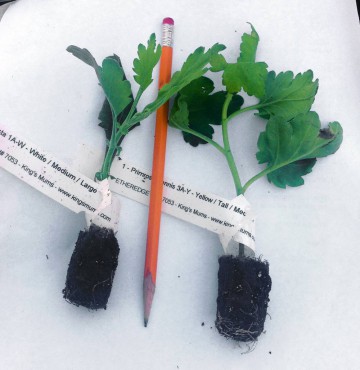 Bud formation is triggered by hours of darkness. This phenomenon is called photoperiodism. Short-day plants flower when the length of night increases beyond a critical level. It is known that artificial light will interfere with this process and inhibit flowering.
Bud formation is triggered by hours of darkness. This phenomenon is called photoperiodism. Short-day plants flower when the length of night increases beyond a critical level. It is known that artificial light will interfere with this process and inhibit flowering.
Do not plant your mums near a streetlight or any light on the outside of your home because even this small amount of light may affect the plant and prevent bloom formation.
Some people prefer to grow chrysanthemums in containers with potting mix, in a sunny but out-of-the-way part of the garden that is far from all evening light, then move the containers to a place of prominence for display during the bloom period.
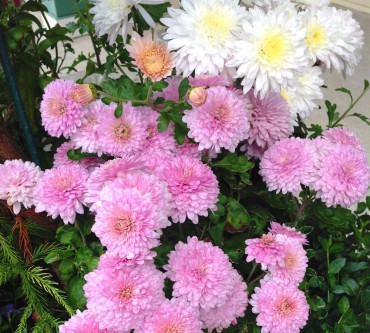 Preparing Mums for Mild Winters and Beyond
Preparing Mums for Mild Winters and Beyond
Growing mums in containers also provides gardeners with the opportunity to easily cut them back to 3-4 inches and clean off the foliage before moving the pots to a somewhat rain-sheltered area for overwintering.
Mums in containers do not survive waterlogging during West Sound’s rainy season. If you grow them in containers, move the chrysanthemums beneath a building overhang, into a cool greenhouse or use other rain shelter. As with other potted plants outdoors, slugs will take up residence given the opportunity.
Mums grown directly in the ground should also be cut back in the fall and will need to be divided in the spring after a few years of growing in the same spot.
Next March, you will know it is time to divide a plant when the center of the mound seems dry and dead but the new growth is beginning to emerge toward the outer edge of the plant. Before the new growth grows several inches, dig up the entire plant and cut it into smaller portions to be replanted or discarded. You could even pot up some starts and give them to a gardening friend.




